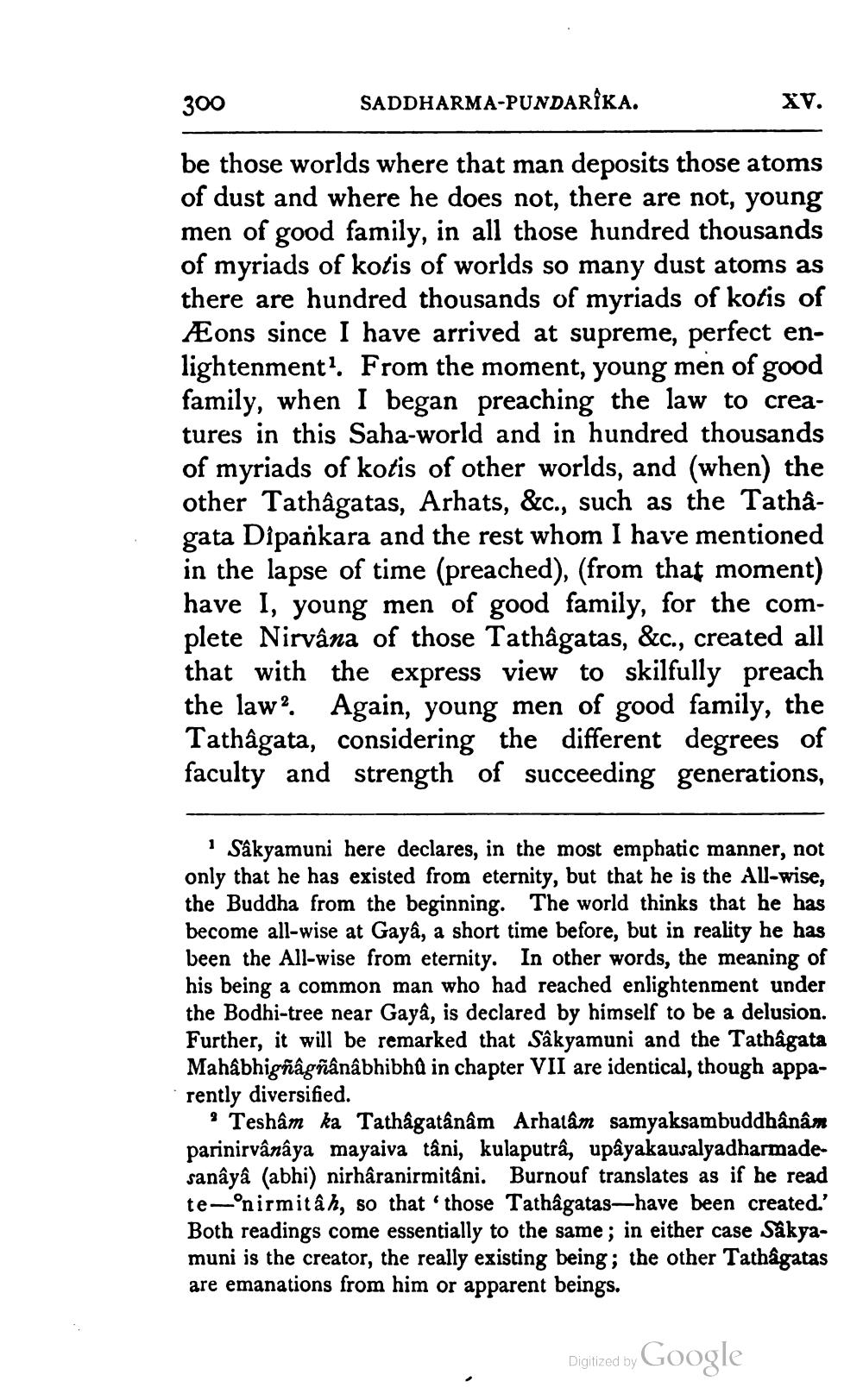________________
300
SADDHARMA-PUNDARÎKA.
XV.
be those worlds where that man deposits those atoms of dust and where he does not, there are not, young men of good family, in all those hundred thousands of myriads of kotis of worlds so many dust atoms as there are hundred thousands of myriads of kotis of Æons since I have arrived at supreme, perfect enlightenment? From the moment, young men of good family, when I began preaching the law to creatures in this Saha-world and in hundred thousands of myriads of kotis of other worlds, and (when) the other Tathagatas, Arhats, &c., such as the Tathagata Dipankara and the rest whom I have mentioned in the lapse of time (preached), (from that moment) have I, young men of good family, for the complete Nirvana of those Tathagatas, &c., created all that with the express view to skilfully preach the lawa. Again, young men of good family, the Tathagata, considering the different degrees of faculty and strength of succeeding generations,
Sâkyamuni here declares, in the most emphatic manner, not only that he has existed from eternity, but that he is the All-wise, the Buddha from the beginning. The world thinks that he has become all-wise at Gaya, a short time before, but in reality he has been the All-wise from eternity. In other words, the meaning of his being a common man who had reached enlightenment under the Bodhi-tree near Gayâ, is declared by himself to be a delusion. Further, it will be remarked that Sâkyamuni and the Tathagata Mahâbhigñâgñânâbhibhů in chapter VII are identical, though apparently diversified.
Teshâm ka Tathagatânâm Arhatâm samyaksambuddhânâm parinirvânâya mayaiva tâni, kulaputrâ, upayakausalyadharmadesanâyâ (abhi) nirhâranirmitâni. Burnouf translates as if he read tenirmitâh, so that those Tathagatas—have been created.' Both readings come essentially to the same; in either case Säkyamuni is the creator, the really existing being; the other Tathagatas are emanations from him or apparent beings.
Digitized by
Digitized by Google




